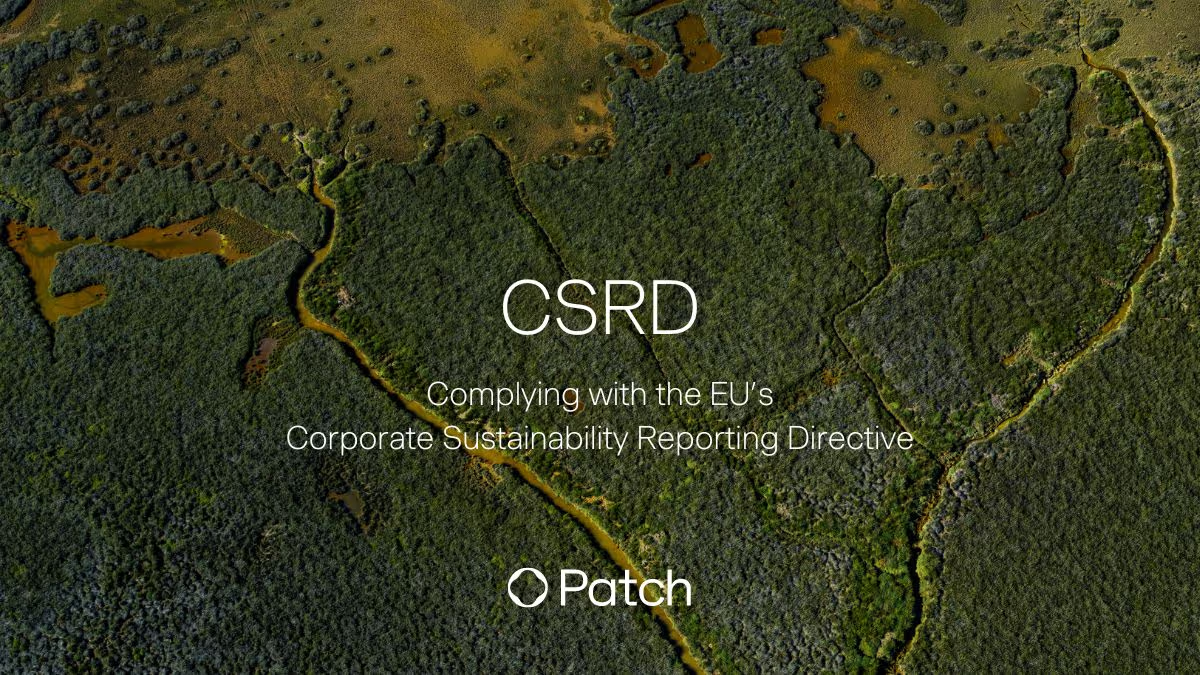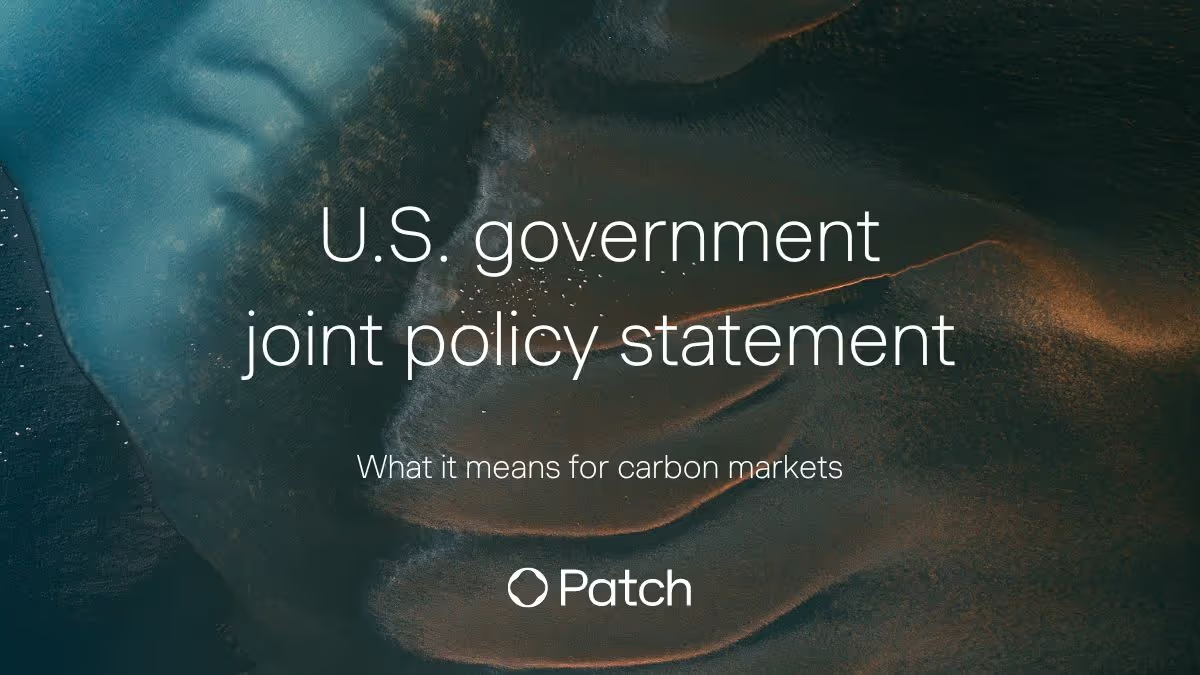Update: ICVCM has released its first set of CCP-labeled methodologies, which includes projects that destroy ozone-depleteing substances. To purchase CCP-labeled credits, please contact our sales team.
The latest release of the new Core Carbon Principles (CCPs) Assessment Framework and Assessment Criteria represents a major step forward in what the Integrity Council for the Voluntary Carbon Markets (ICVCM) promised in March: to deliver actionable principles that unify the voluntary carbon market. This is the market-based approach we need to drive scaled accountability in the VCM — and drive it fast.
By focusing on assessment at the program and category level rather than the project level, this framework puts the burden of increasing the integrity of carbon credits — both in definition and application — on the actors currently entrusted to deliver it: the standard setters themselves.
What are the Core Carbon Principles?
In a complex and nuanced standards landscape, the ICVCM’s CCPs set guidelines for the supply side of the voluntary carbon market (VCM). The ICVCM is largely concerned with defining integrity for carbon credit projects and providing a process to validate that integrity, a multi-year effort that has resulted in the release of the CCPs. That means, among other things, the CCPs set thresholds for foundational carbon credit attributes like permanence and additionality, standards for transparency, and requirements for third-party verification and validation bodies (VVBs).
Meanwhile, SBTi (Science-based Targets initiative) sets standards for corporate emissions reductions, and its forthcoming Beyond Value Chain Mitigation (BVCM) guidelines will provide recommendations for companies investing in climate impact outside of their own direct value chain reductions. Finally, VCMI (Voluntary Carbon Market Integrity Initiative) helps fuse these two efforts by mapping out pathways for the credible use of carbon credits alongside a decarbonization strategy. Companies can identify appropriate claims based on these joint efforts using VCMI’s Claims Code of Practice.
Watch our webinar: The state of standards in the voluntary carbon market
One last standards body to call out serves as the foundation for a lot of what ICVCM is doing with its CCPs: CORSIA. The Carbon Offsetting and Reduction Scheme for International Aviation is less comprehensive than ICVCM’s standards, but governs a large portion of credits in production, and as such is a benchmark that ICVCM references often in the CCPs.
The key themes of the CCP Assessment Framework
Four months ago, we called for “a bold articulation of where the market should be going,” and ICVCM has delivered. We’ll look at some of the themes we see in the framework, and then call out some specific developments you should be aware of.
A good balance of speed and rigor: The VCM needs high standards for integrity that boost a currently fragile confidence in the market. At the same time, it needs to scale demand quickly to make an impact on our global climate goals, staying within planetary boundaries of 1.5C. The CCPs strike a solid balance between both, in part by assessing programs and methodologies rather than individual projects. This is similar to the work the International Carbon Reduction and Offsetting Accreditation (ICROA) has done, but goes several steps further. Ultimately, it could require VVBs to be prescriptive for project categories, rather than projects themselves. That means new projects, in theory, will be able to certify faster, and meet a higher standard.
A pragmatic recognition of where we are and a bold vision for where we’re going: Another set of extremes that need to be balanced in today’s VCM are lack of ambition and lack of accessibility. We know some methodologies aren’t perfect, but they’re crucial for near-term climate action. The CCPs provide a path for both nascent removal projects to start off strong, as well as for older projects to prove rigor. Nowhere is this more clear than in the CCPs’ permanence standards. They acknowledge “temporary carbon storage, even over long periods, cannot substitute for permanent emission reductions” while also noting the role immediate investment in finite mitigation solutions can play in avoiding “climate tipping points.” This approach is well-aligned with the Oxford Principles.
Questions remain about implementation: One thing that we know with voluntary standards — the effectiveness is in the implementation. Will suppliers adopt them? How quickly can VVBs get on board? Will buyers put to rest integrity anxiety and increase demand? And specifically to the methodological assessment approach, how will individual projects achieve certification and surface it to buyers quickly? A fast, functional implementation will necessarily require sophisticated technology.
Digging into the details
Aside from the larger themes, here are some specifics that will impact the VCM in both large and small ways:
Permanence: ICVCM is setting a 40-year minimum for permanence (the length of time carbon is removed from the atmosphere). Standards bodies are already following suit — Verra, for example, is set to increase its permanence threshold from 30 years to 40 in August. On top of that, the CCPs have opened the door to a more nuanced conversation about the near-term role less permanent solutions will play in avoiding climate tipping points.
REDD+: Verra-certified REDD+ projects must transition to the recently-updated Verra methodology that is compliant with the ICVCM's criteria in order to be considered for CCP approval. Generally, the CCPs’ language around avoidance projects like REDD+ is clear: we need projects like these while other more permanent methods scale, but we need to be relentlessly rigorous with regards to project design, quantification, additionality and monitoring.
No double counting: ICVCM’s rules against double counting don’t just apply to carbon credits, but also to all environmental asset markets. The climate impact delivered by a Renewable Energy Credit (REC), for example, cannot also be claimed as a carbon credit within the VCM. This represents another point of synergy with other standards bodies — specifically what we anticipate from SBTi’s BCVM guidelines. It also provides a good foundation to track and not double-count country-level climate action as Article 6 of the Paris Agreement is implemented.
Sustainable development and co-benefits: In a major first for VCM standards, the CCPs require sustainable development benefits to be included in validated design documents, benefits which today are often inconsistently documented, and not always verified. That includes things like labor rights and working conditions, biodiversity conservation, indigenous peoples, local communities, cultural heritage, gender equality, and a lot more. This raises the bar for claims around co-benefits like investment in local communities. Adding transparency and accountability to sustainable development will mean more confidence that carbon credit revenues are going back to local and indigenous communities. For example, when projects require benefit-sharing with indigenous peoples and local communities, the CCPs include solid transparency requirements.
Project categories that may be restricted from CCP-approval: “Additionality” is a term that describes whether or to what extent climate impact wouldn’t occur without the incentive provided by carbon credits. As some climate activities prove viability without the carbon credit mechanism, they might no longer be seen as additional. It looks like that’s the case with several project categories, including hydrofluorocarbon reduction, certain renewable energy projects, and energy efficiency improvements, among others.
The bottom line: continuous improvement
The final — and most important — theme of these Core Carbon Principles is continuous improvement of the assessment framework. The next version is due out in 2025, and in the meantime, we expect more learnings and more improvements, not just to the CCPs, but to the VCM as a whole as a result of these standards.
This framework provides a forward-focused vision the entire market can rally around. We’ve heard firsthand the hesitancy some companies have to engage with the VCM while there are questions about integrity. With this release, the CCPs could answer those questions and unlock the market acceleration we need to help ensure a livable future.








